Penang Char Kway Teow is a street food that is made with wide, flat rice noodles that are stir-fried with shrimp, beansprouts, eggs, and tofu. I have used homemade spice paste that can be customized, making the noodles flavorful. Fish cake and blood cockles can also be added to this dish, although I have omitted them; I have added bok choy to make it a complete meal using less oil than restaurant-quality noodles!
Char Kway Teow – Malaysian street food:
This recipe goes back three generations on my husband’s side of the family who use ‘wok hei’ primarily to make the Penang Char Kway Teow. Char Kway Teow is mostly associated with Singapore and Malaysia, although its roots are traced back to China. ‘Char’ in the Chinese Hokkien dialect means stir-fried and ‘Kway Teow’ refers to flat rice noodles. The concept is similar to the ‘Chow Fan’ that is available in Chinese restaurants. Char Kueh Teow is distinct, as it borrows ingredients from Southeast Asia, including the use of sambal or chili paste.
People sometimes line up for hours to get a plate of this fried noodle dish. This is especially true in Penang, Malaysia where I have also waited a long time to get a plate of noodles from a well-known street vendor. Where food takes on almost a religious fervor, people are willing to wait to eat a plate that is flavorful, satisfying, and well prepared.
We care about quality when we eat out. We are more than willing to wait for hours to have lunch at some restaurants that serve quality food. Why not have better quality food at home?
What is ‘wok hei’?
Singapore hawker centers use ground chilis, fried eggs, fried tofu, and shrimp, with some chives to make the Char Kway Teow. What was especially tantalizing was the aroma at these hawker centers. The aroma and flavor are incredibly distinctive, and I have since discovered that it comes from a technique that I learned on one of my family visits to Malaysia. The secret ingredient in a great Penang Char Kway Teow is the ‘wok hei’. ‘Wok hei’ is referred to as the ‘breath of the wok’. The intricate caramelized and smoky flavor that is the signature of this recipe can only be achieved through the addition of fresh ingredients to extreme heat, thus infusing the flavor and preserving the crunch.
Wok hei encompasses the taste that you get when the food is seared. In other words, ‘wok hei’ results in the combination of a gentle aroma from the steaming food with the flavors of the dish that sometimes burn on your tongue. To enhance the wok hei, we must use high heat to cook the food. Both wok hei and the Maillard reaction involve the use of heating the food on high.
I have read in an article on wok hei that the Maillard reaction involves chemistry. Under high heat, amino acids interact with the sugars that are reduced in food. This chemical reaction refers to the Maillard reaction that causes the caramelizing of food, thus releasing aromatic flavors.
Street vendors in Malaysia and Singapore generally use seasoned cast iron wok to make Char Kway Teow, and they achieve ‘wok hei’ by preparing their dishes in plate portions. The recipe I describe below uses eggs, bok choy, shrimp, and tofu. The famous Penang Char Kway Teow uses blood cockles that I have omitted since we do not eat them. The searing effect at high temperatures, which is essential to wok hei, is what makes the Penang Char Kway Teow unique.
Frequently Asked Questions:
- What is the difference between Singapore and Malaysian Char Kway Teow?
Singapore Char Kway Teow is slightly sweeter than its Malaysian counterpart where the sweet kecap manis sauce is also added to the noodles.
2. Are Pad Thai and Char Kway Teow the same?
No, Pad Thai is sweeter and tangier than the Char Kway Teow which has a smoky flavor and tends to be savory.
If you’ve tried this recipe or have questions, I would love to hear from you. Please feel free to share (below) your thoughts, comments, or any questions that you might have. And if you like my recipes, you could subscribe to my mailing list for the latest recipes that will be delivered straight to your inbox. From my pen to your table, Bon Appetit!
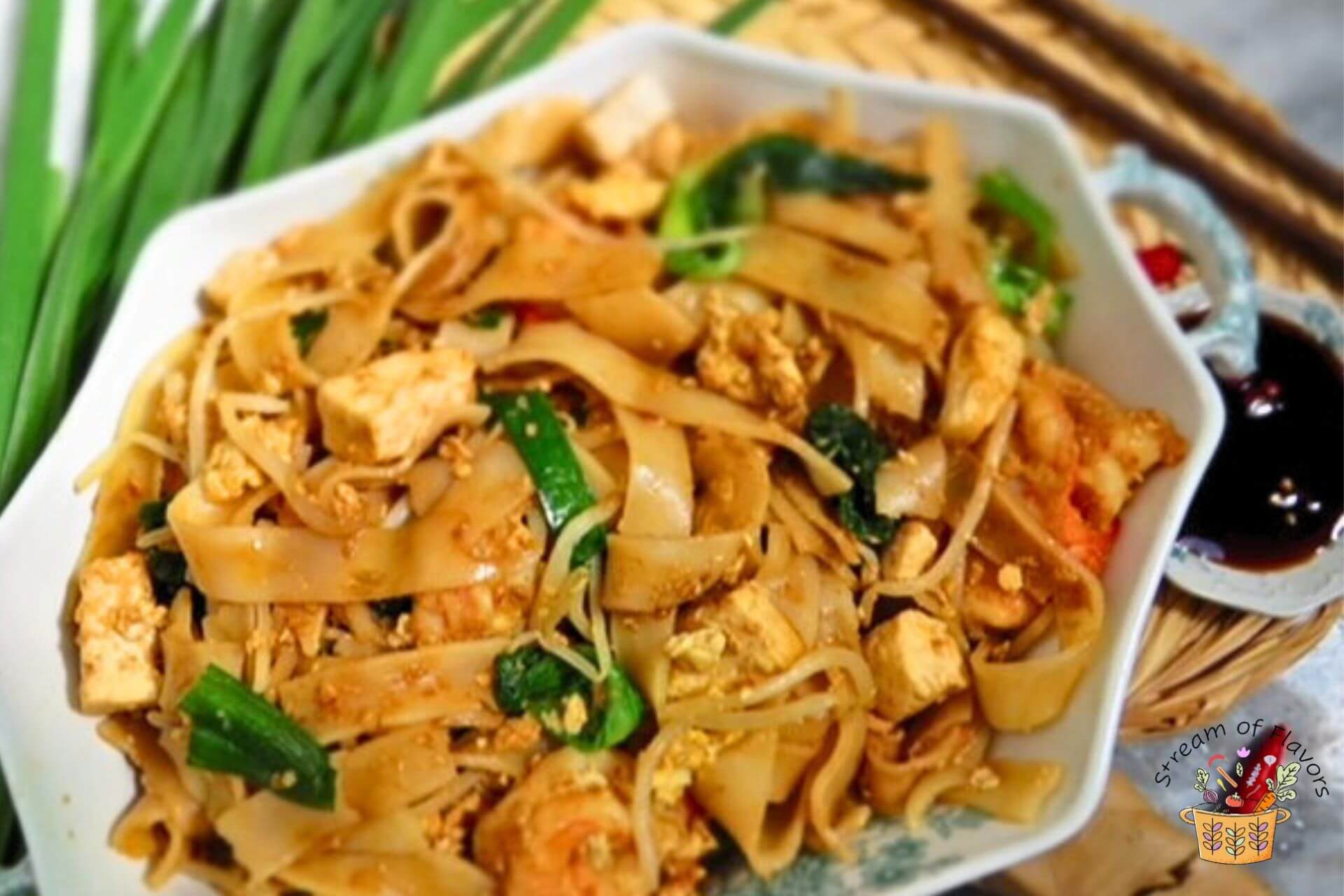
Ingredients:
- Spice paste: homemade paste with dried shrimp, shallot, and dried red chili
- Noodle: dried flat wide rice noodles; substitute with fresh rice noodles if available
- Veggie: bok choy, beansprouts
- Protein: fresh shrimp, firm tofu, egg; if using frozen shrimp, thaw to room temperature before cooking
- Aromatics: garlic, shallot
Here are the step-by-step instructions on how to make this dish. Please refer to the recipe card below for the measurements.
How to make the Penang Char Kway Teow:
- Prepare the ingredients. Peel and devein the shrimp, grind the spice mixture to a paste in a spice grinder with a tablespoon of water, and soak the dried noodles in hot water per package instructions. (I’ve fried the noodles in three batches by dividing the ingredients into three).
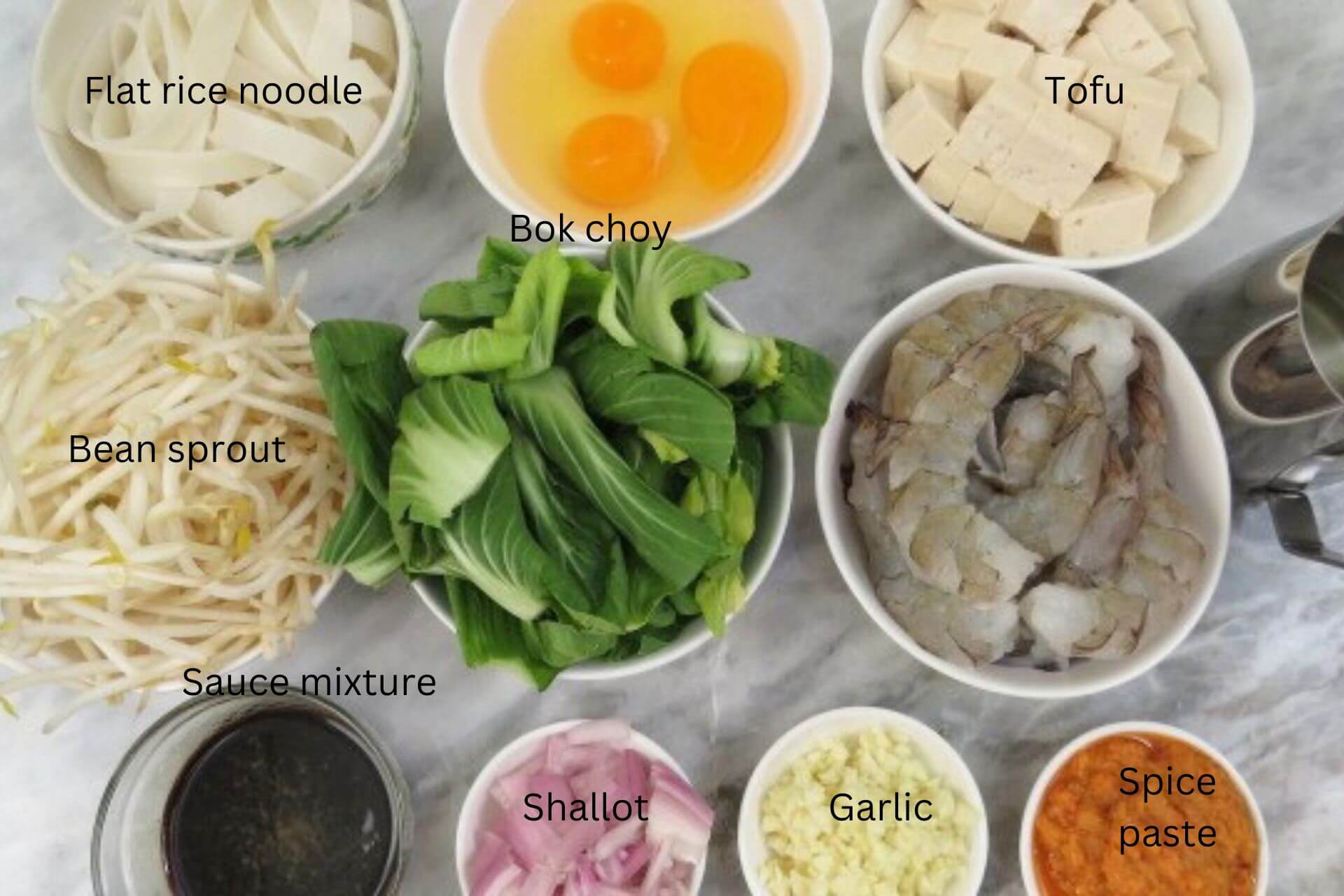
2. Heat a wok, add oil and fry the minced garlic for a few seconds on high heat. Add the shallot and fry until tender. Now add the shrimp and stir-fry for 2-3 minutes. Spoon in the spice paste and fry until fragrant.
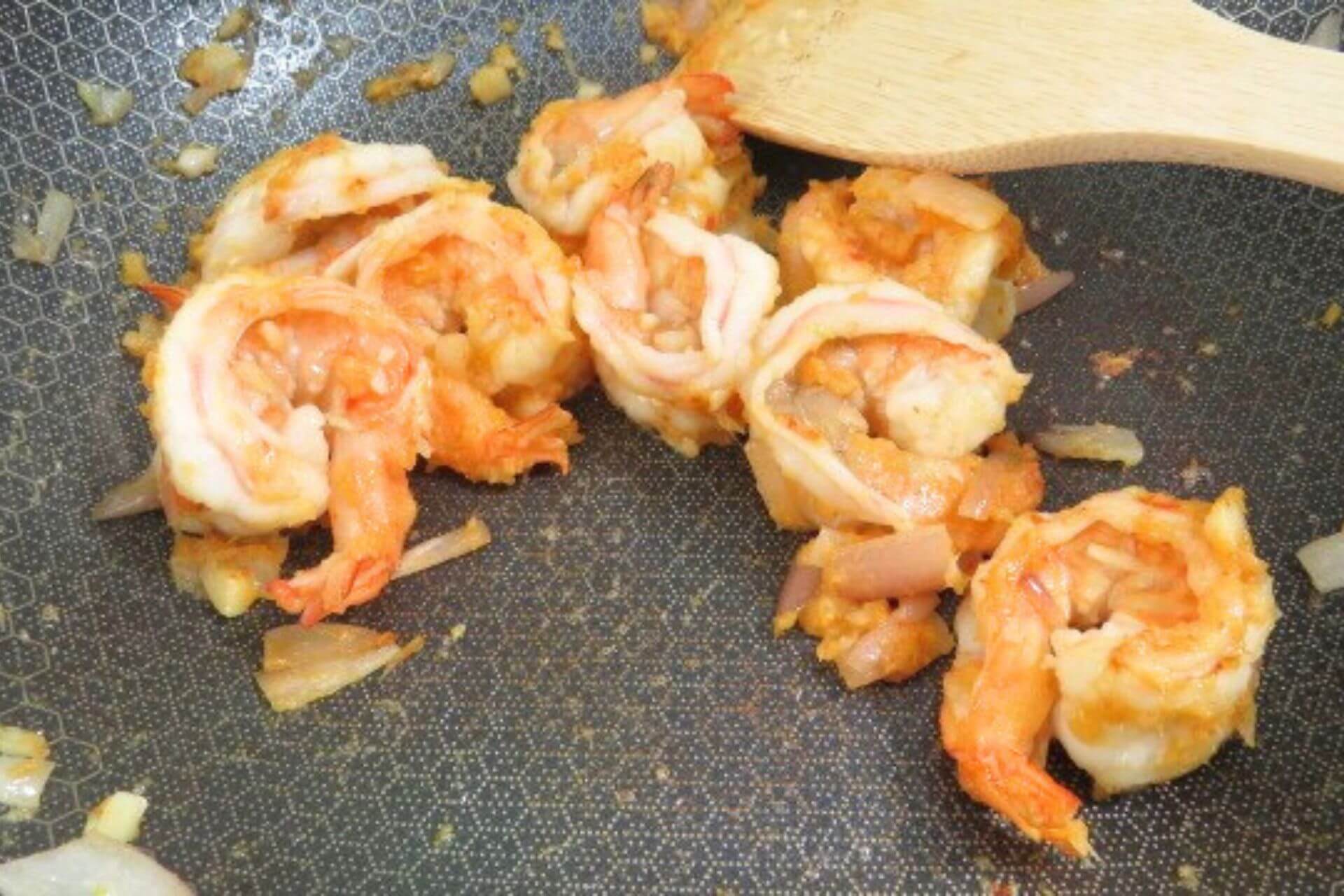
3. Add the chopped bok choy and scrape the sides of the wok. Put the tofu into the wok and add some oil if it sticks.
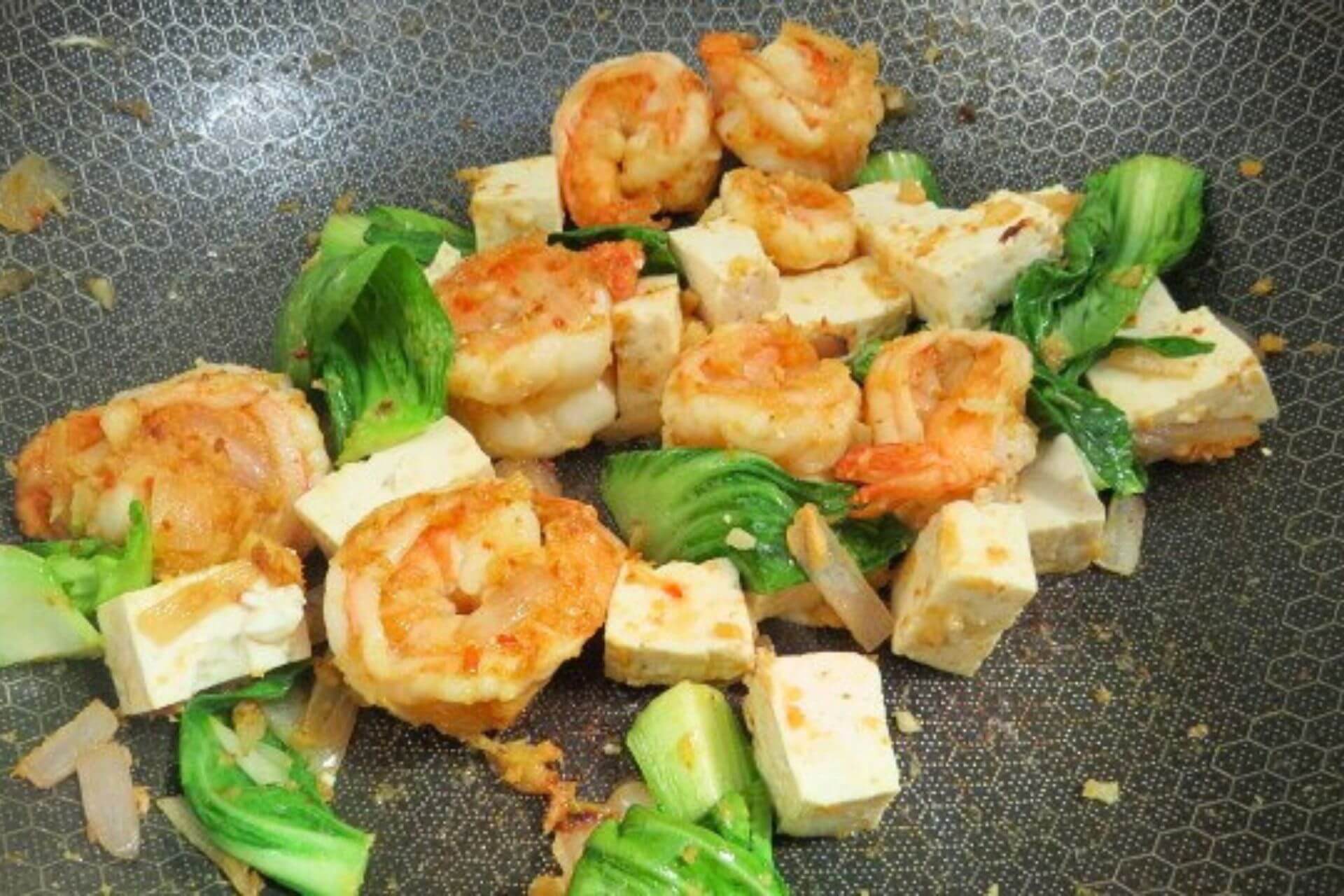
4. Add the cooked and drained noodles. Fry for a few seconds, make a well in the center of the wok and break an egg into it. Use the spatula to scramble the egg and fry the ingredients through quick wrist movements on high heat. Drizzle some oil if necessary.
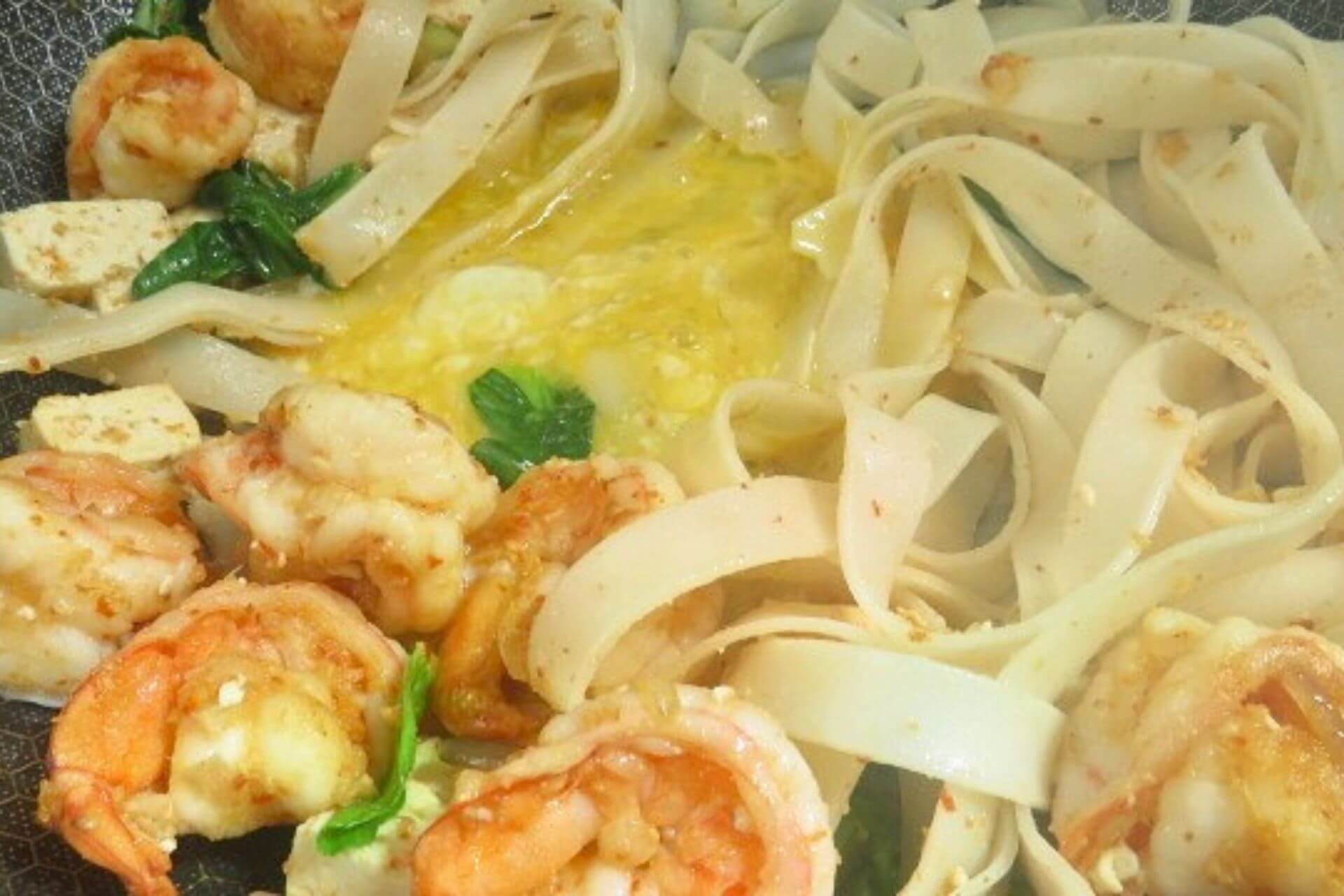
5. Add the sauce mixture and the beansprouts. Fry again on high heat and scrape the sides of the wok to get the charred edges.
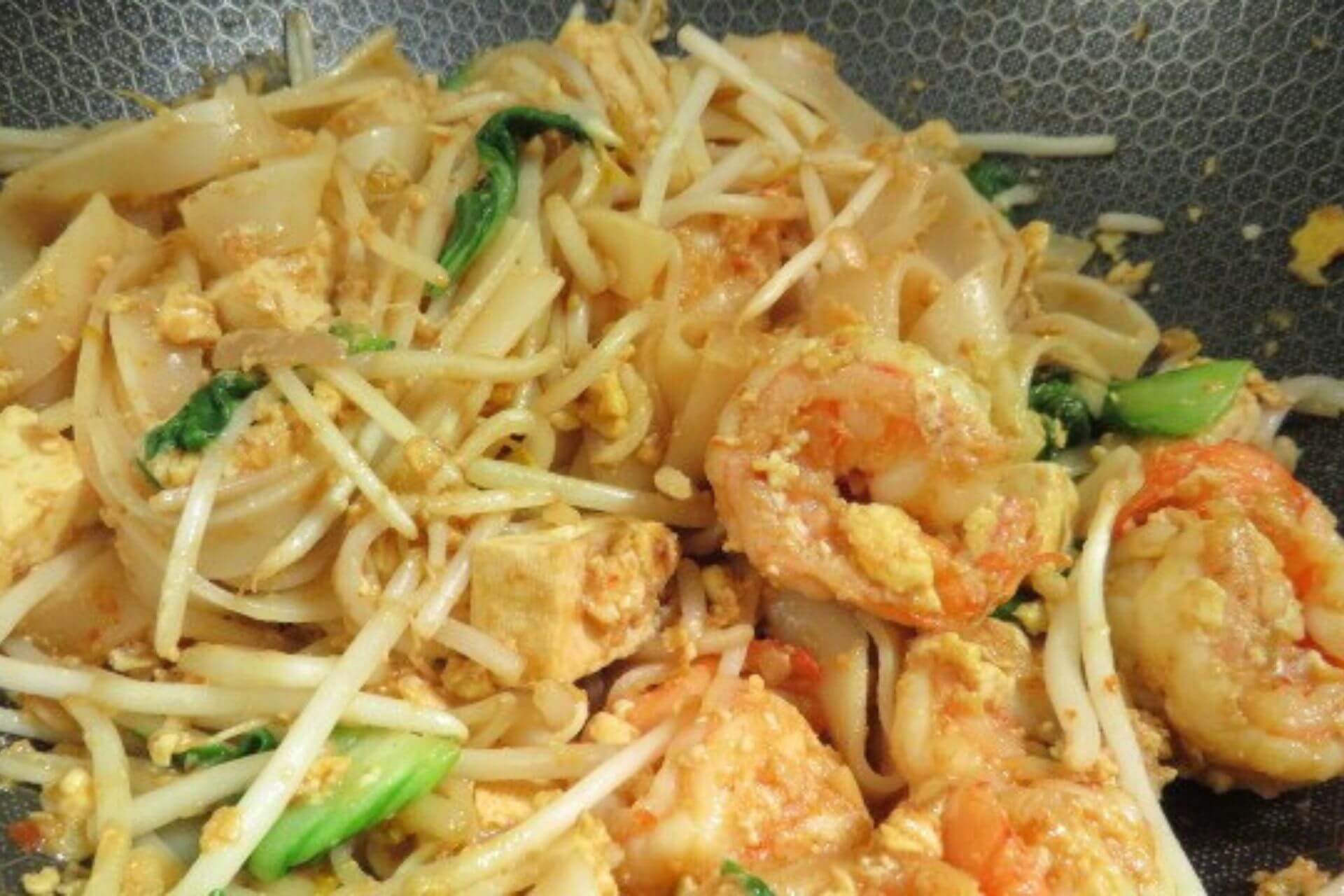
6. Turn off the heat and garnish with chives.
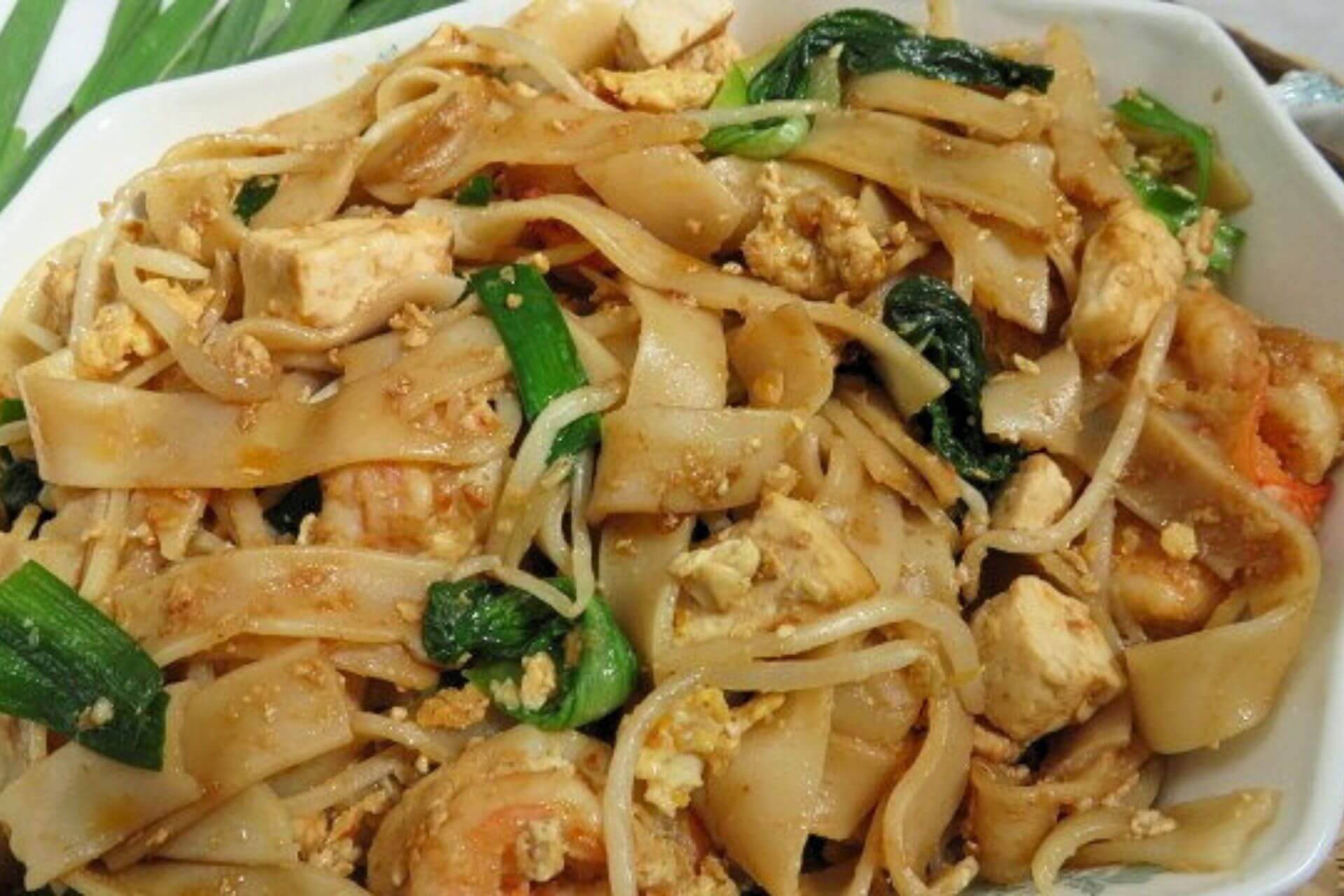
1. The wok must be hot while stir-frying. A cast iron wok that is well-seasoned or the honeycomb wok is ideal for making the Penang Char Kway Teow.
2. Every step has a certain rhythm or timing. Frying the shrimp for 2-3 minutes, the garlic for a few seconds, and so on. The chemical reaction of each of those ingredients complements the final dish. It is about quick hand movements. For best results, divide the entire ingredient list into three batches, and fry them separately in smaller batches.
3. The Penang Char Kway Teow should have slightly charred edges, so scrape the wok and stir-fry the noodles on high heat.
4. If you use fresh noodles, do not soak them or boil them in hot water. Presoak the dried noodles in boiling water per package instructions and drain them at the al dente stage. If you oversoak the noodles, they break more while stir-frying them. Some of the noodles will stick together – detach them one by one by gently pulling them apart. If you like fewer broken noodles, go around the wok and do not break them while frying. Street vendors stir-fry the noodles a lot to get the smoky edges and most of the noodles will be broken, so it is ok to have a plate of small pieces of noodles.
5. I use oil sparingly and only when the ingredients stick to the sides of the wok. This helps me reduce the amount of oil I add to the dish.
Serving suggestion:
I serve the Penang Char Kway Teow garnished with chives with a small condiment bowl of soy sauce with some chopped chili on the side. Serve this noodle dish with a makrut lime if you can find it.
Storage:
This dish can be refrigerated for 2-3 days. Fried noodles can be frozen in an airtight container for three months. To reheat the Penang Char Kway Teow, thaw the frozen noodles to room temperature, and then stir-fry with eggs and soy sauce.
Other noodle recipes with shrimp that you might like:
Penang Char Kway Teow
Equipment
- Wok
Ingredients
For the Spice Paste:
- 2 tbsp dried shrimp
- 4 shallot small
- ½ tsp salt
- 4 dried red chili
For the Penang Char Kway Teow
- 4 tbsp peanut oil
- 6 cloves garlic minced
- 1 shallot julienne-cut
- ½ lb shrimp jumbo
- ¼ lb bok choy greens
- 1 pack firm tofu
- 1 lb rice noodles flat, wide
- 3 egg
- 1 pack beansprouts
- a few chive
For the sauce mixture:
- 2 tbsp dark soy sauce
- 4 tbsp light soy sauce
Instructions
- Prepare the ingredients. Peel and devein the shrimp, soak the spice paste ingredients in water for 15 minutes, grind the spice mixture to a paste in a spice grinder with a tablespoon of water, and soak the dried noodles in hot water per package instructions. (I've fried the noodles in three batches by dividing the ingredients into three).
- Heat a wok, add oil and fry the minced garlic for a few seconds on high heat. Add the shallot and fry until tender. Now add the shrimp and stir-fry for 2-3 minutes. Spoon in the spice paste and fry until fragrant.
- Add the chopped bok choy and scrape the sides of the wok. Put the tofu into the wok and add some oil if it sticks.
- Add the cooked and drained noodles. Fry for a few seconds, make a well in the center of the wok and break an egg into it. Use the spatula to scramble the egg and fry the ingredients through quick wrist movements on high heat. Drizzle some oil if necessary.
- Add the sauce mixture and beansprouts. Fry again on high heat and scrape the sides of the wok to get the charred edges.
- Turn off the heat and garnish with chives.
Video
Notes
- You could also fry each ingredient separately, one at a time and remove from the wok. Then add all the ingredients and stir-fry them together with the noodles.
- You can exclude the shrimp and shrimp paste for the veggie option. Add more vegetables such as Chinese cabbage and sliced carrots. Eggs are optional, but the chili-garlic paste is a must.
- The noodles must be al dente or firm, yet cooked through. If they are too soft, then they will break more easily during stir-frying. Separate the noodles if they are stuck to each other by gently peeling them.
- Add oil as you notice the sides sticking. This avoids utilizing too much oil.
Nutrition

This post may contain affiliate links. For more information, please read my Disclaimer.

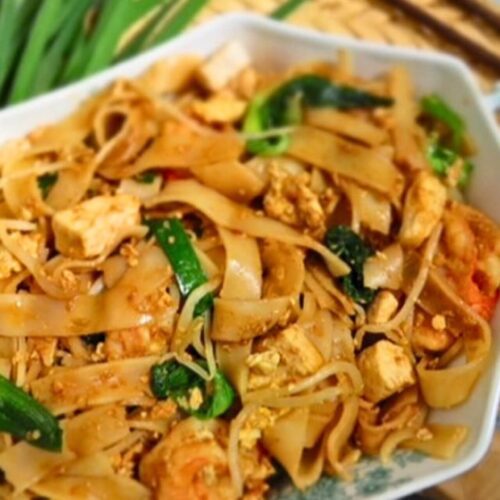
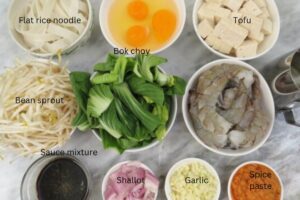
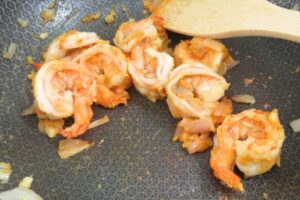
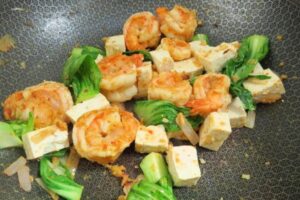
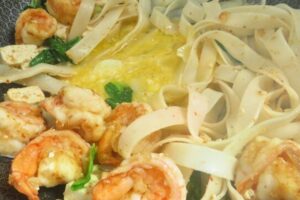
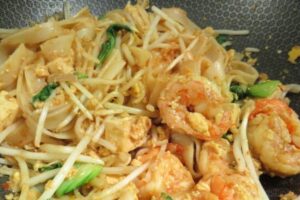
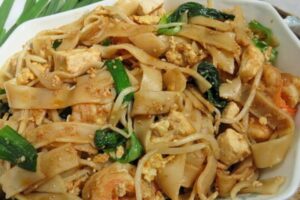




















great flavors!
this is perfect for a weeknight, thanks!